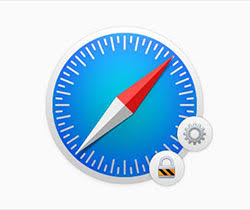How to Delete Malware from an Infected Safari Web Browser
 Despite Chrome's massive lead in the browser race, Safari is still a popular web browser on systems that run Apple's macOS. In late 2018 Safari was going toe to toe with Microsoft's Edge and Internet Explorer, with between 3.5 and 4 percent of worldwide users surfing on Safari. Despite the common misconception that malware for Macs is virtually nonexistent, there is malicious software that can affect Safari web browsers.
Despite Chrome's massive lead in the browser race, Safari is still a popular web browser on systems that run Apple's macOS. In late 2018 Safari was going toe to toe with Microsoft's Edge and Internet Explorer, with between 3.5 and 4 percent of worldwide users surfing on Safari. Despite the common misconception that malware for Macs is virtually nonexistent, there is malicious software that can affect Safari web browsers.
The most common issues that affect Safari browsers are universal across all platforms and browsers. Those are browser hijackers that usually alter the browser's default search engine and homepage, often contain a component that collects and stores user activity information, including search queries. Luckily, browser hijackers are rarely a significant danger to the compromised system and can be cleaned with relative ease.
The first thing you want to clean your Safari would be to remove any suspicious extensions that might have slipped in unnoticed or without your explicit consent. To do this, follow these steps:
- Click your Safari menu, then select "Preferences"
- In the "Preferences" window, select the "Extensions" tab
- Find and remove any extensions you are unfamiliar with and did not choose to install
The next step would be to restore your Safari browser's homepage. To do this, follow these instructions:
- Click your Safari menu, then select "Preferences".
- Select the "General" tab and find the "Homepage" field.
- Enter your preferred homepage address.
To revert back to your original default search engine, do the following:
Click the Safari menu, then select "Preferences"
Select the "Search" tab, then find the "Search engine" field
Click the "Search engine" popup menu and choose one of the search engines
Safari used to have a single "Reset Safari" button that Apple decided to remove in an update that took place a few years ago. This is probably due to the fact that in addition to cleaning extensions and general settings, a reset would delete all cookies, browsing data and cache, all saved logins and passwords, as well as all your auto-fill info. This is often far more than a user needs to do to get rid of a pesky browser hijacker.